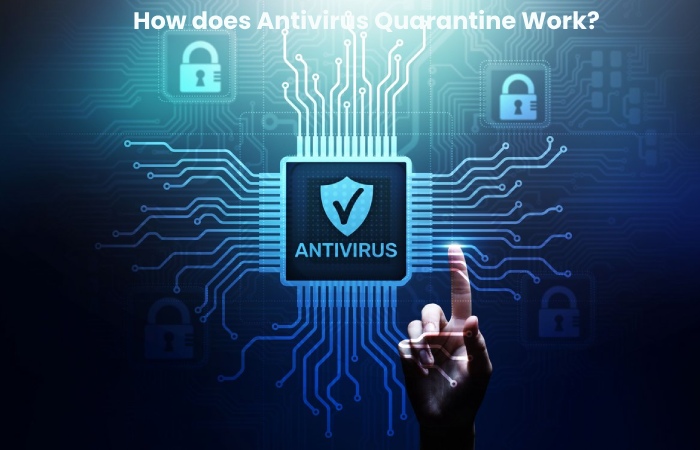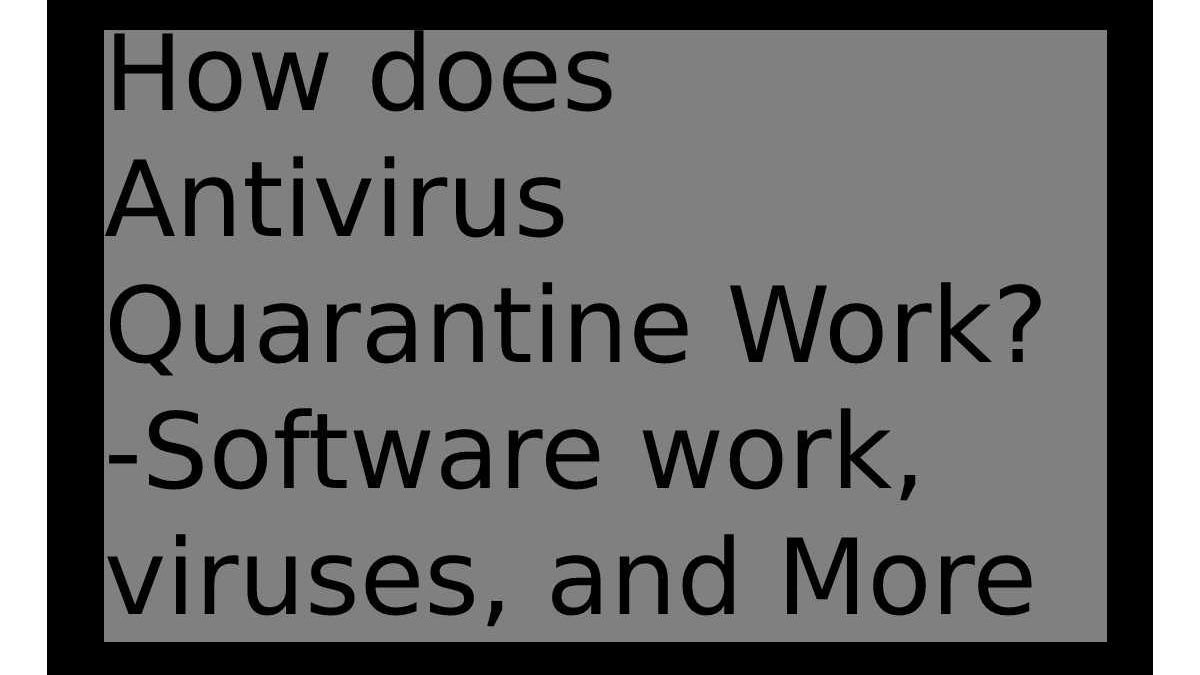Table of Contents
Introduction

Antivirus quarantine is a feature of antivirus software that isolates potentially harmful files from the rest of your computer. This prevents the files from being able to run and cause damage to your computer.
When an antivirus program detects a potentially harmful file, it will quarantine it in a separate location on your computer. The file will still be on your computer but cannot run or cause harm.
The quarantined file will store in a hidden folder inaccessible to other programs, including your antivirus software. The file cannot be executed or deleted without your permission.
You can delete the quarantined file, restore it to its original location, or scan it with your antivirus software again. You can convert the file to its original site if it is harmless. If the file is determined to be malicious, you should delete it.
Steps on How Antivirus Quarantine Works
- Your antivirus software scans your computer for malware.
- If the software finds a potentially harmful file, it will quarantine it.
- I will move The quarantined file to a hidden folder on your computer.
- The file is blocked from running or causing any harm to your computer.
- You will notify that a file has been quarantined.
- You can choose to delete, restore, or scan the quarantined file.
Quarantine is a helpful feature that can help protect your computer from malware. If your antivirus software quarantines a file, it is essential to take action to resolve the issue.
Tips for Dealing with Quarantined files:
- If you are unsure whether the file is safe, delete it.
- If you need to restore the file, scan it with your antivirus software first.
- If you are unsure what to do, contact your antivirus software vendor for help.
Next, these tips can help keep your computer safe from malware.
Antivirus Quarantine Saparte Actually Potentially Harmful files
Quarantine is a security measure to isolate potentially harmful files from the rest of the system. This prevents the files from being able to run and causes damage to the system.
When an antivirus program detects a potentially harmful file, it will quarantine it in a separate location. The file will still be on the system, but it cannot run or cause any harm.
The quarantined file will be stored in a hidden folder inaccessible to other programs, including the antivirus program. The file cannot be executed or deleted without the user’s permission.
The user can then decide what to do with the quarantined file. They can delete it, restore it to its original location, or scan it with their antivirus software again. They can convert the file to its original location if it is deemed harmless. If the file is determined to be malicious, they should delete it.
Quarantine is a helpful security measure that can help protect systems from malware. By isolating potentially harmful files, quarantine can help prevent them from causing damage to the system.
How Does Antivirus Quarantine Work
How does Antivirus Quarantine Work: An antivirus can check data on your computer in two different methods. Both methods are passive, but only one is active.
When you let your antivirus program run in the background, it does passive scanning.
When you attempt to download a file from the Internet and receive a warning about a potential hazard, your antivirus is in the background defending your computer.
How Does Antivirus Software Work?
- Although running your antivirus program in the background consumes more battery life because it is open even when you are not using it.
- It is an excellent way to secure your devices automatically.
- Different from passive scanning, active scanning has the potential to be more effective. Active scanning takes place when you instruct your antivirus program to scan your files.
- Depending on the software, you can do a simple or thorough scan. The depth and breadth of the scan are typically the cause of the variation.
- A deeper scan typically takes longer because it scans every file on your computer, whereas a basic scan might only scan essential files to save time.
- If an infected file is discovered, it can be quarantined automatically, or you might be prompted to choose what to do with the infected files.
- Your program settings and the antivirus you employ will determine this.
What is an Antivirus Quarantine?
- The process of isolating a file that is thought to be virus-infected to stop it from contaminating other areas of your computer is known as quarantining.
What Happens When you Quarantine a Virus?
- When an antivirus quarantines an infected file, it removes it from its original location and modifies it so it can no longer function as a program.
- It then moves it to a hidden folder inaccessible to other software and the user, where it stays until you decide to deal with it.
- If your antivirus scan misses a problematic file, it may occasionally be possible to quarantine it manually.
Are Quarantined Viruses Removed?
- Unless you specifically request it, quarantined files are not removing.
- Quarantining a suspicious file only moves the infecting file into a secure location on your computer, as was already describing.
- You will need to either manually remove the file or direct your antivirus to do so.
- A file under quarantine can be kept there indefinitely, but if it’s a critical file that needs to be cleaning up, quarantine it first.
Should I be Worried About Infected Files?
- While quarantining infected files is safe and the best course of action, there is always the chance that your antivirus software will issue a false alarm.
- And quarantine a system file that is essential for the smooth operation of your computer.
- It is why you are typically giving the option to delete something.
- You can ‘clean’ any quarantined files you require and re-place them in their original location, so don’t worry too much about data loss.
- Although it’s safe to keep files in quarantine many people decide to leave them there indefinitely always it’s preferable to delete a problematic file if you can entirely.
- Although quarantined files cannot damage your computer, they use crucial hard drive space.
- Therefore, you should clean any infected files currently in quarantine as quickly as possible. Remember that it’s as easy as scanning.
- Quarantining, and cleaning or removing contaminated data.

